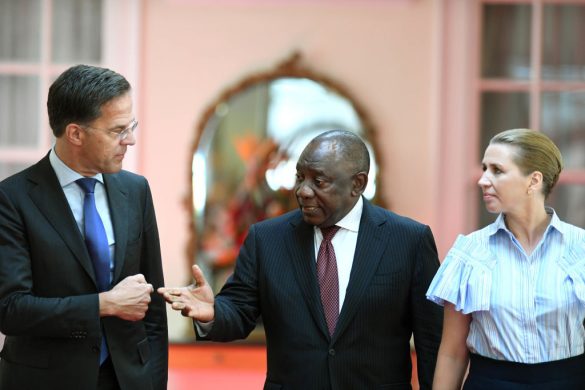FNs Højkommissariat for Flygtninge (UNHCR) advarer tirsdag om, at børnedødeligheden blandt somaliske flytninge i lejrene i det østlige Etiopien har nået alarmerende højder. Siden lejrene åbnede i juni er 10 børn under 5 år døde hver dag.
DOLLO ADO, ETHIOPIA, 16 August 2011 (UNHCR): Acute malnutrition is thought to be the major cause of the child deaths at the Kobe refugee camp.
It was opened to help cope with an influx of tens of thousands of Somalis crossing to the Dollo Ado area to escape drought, famine and fighting in their country.
An outbreak of suspected measles has compounded the problem and is thought to have caused some deaths. In Kobe and the three other camps in the Dollo Ado area, “We have seen 150 cases of suspected measles and 11 related deaths,” said UNHCR spokesperson Adrian Edwards. “The combination of disease and malnutrition is what has caused similar death rates in previous famine crises in the region,” he added.
Christopher Haskew, a UNHCR medical officer in Dollo Ado, said a priority for UNHCR was to take action to prevent people dying as a result of the outbreak. He noted that measles is highly contagious and can have a devastating impact on children, especially those who are malnourished.
Mass vaccination
Edwards said UNHCR was “urgently working with partners to respond to the emergency and control the measles outbreak,” adding that a mass vaccination campaign against measles was completed in Kobe on Monday. This targeted all children between the ages of six months and 15 years. It will continue in the other camps in the coming days.
A key priority for all partners working in the camps is to promote awareness of the health and nutrition programmes available for refugees. “There is a need to encourage parents to return with their children to health centres for continued treatment for malnutrition, and to actively identify children who are sick to ensure they receive immediate medical attention,” Edwards said.
UNHCR is also working with refugee leaders and outreach workers to raise awareness of measles symptoms and hygiene promotion. Together with the Ethiopian government and other partners, UNHCR is addressing other, underlying causes of the high mortality rate by improving nutrition, water supply and sanitation, amongst others.
New entry point
Elsewhere in Ethiopia, some 17,500 Somalis have crossed into the Gode and Afder areas over the last six weeks, according to a joint field mission led by UNHCR and the government. These are totally new entry points some 250 kilometres north-east of Dollo Ado, which has been the primary destination in Ethiopia for Somalis.
Most new arrivals originated from the Bakool and Bay regions, with others coming from the Gedo and Hiran areas. They are staying in makeshift shelters in five different locations.
Preliminary assessments showed that an estimated 95 per cent were women and children, with the majority in a very poor condition. “UNHCR and the Ethiopian government have decided to immediately provide a one-month food ration to the new arrivals,” spokesman Edwards said.
The mission voiced concern that a lack of shelter and health care, poor sanitation and overcrowding could lead to opportunistic diseases such as acute diarrhoea, measles and whooping cough. The team recommended the urgency of rushing essential drugs to the area.
Discussions are under way to relocate the group to camps in Dollo Ado. However, the new arrivals are weak and might need some time to stabilize and gather enough energy to be able to relocate.














